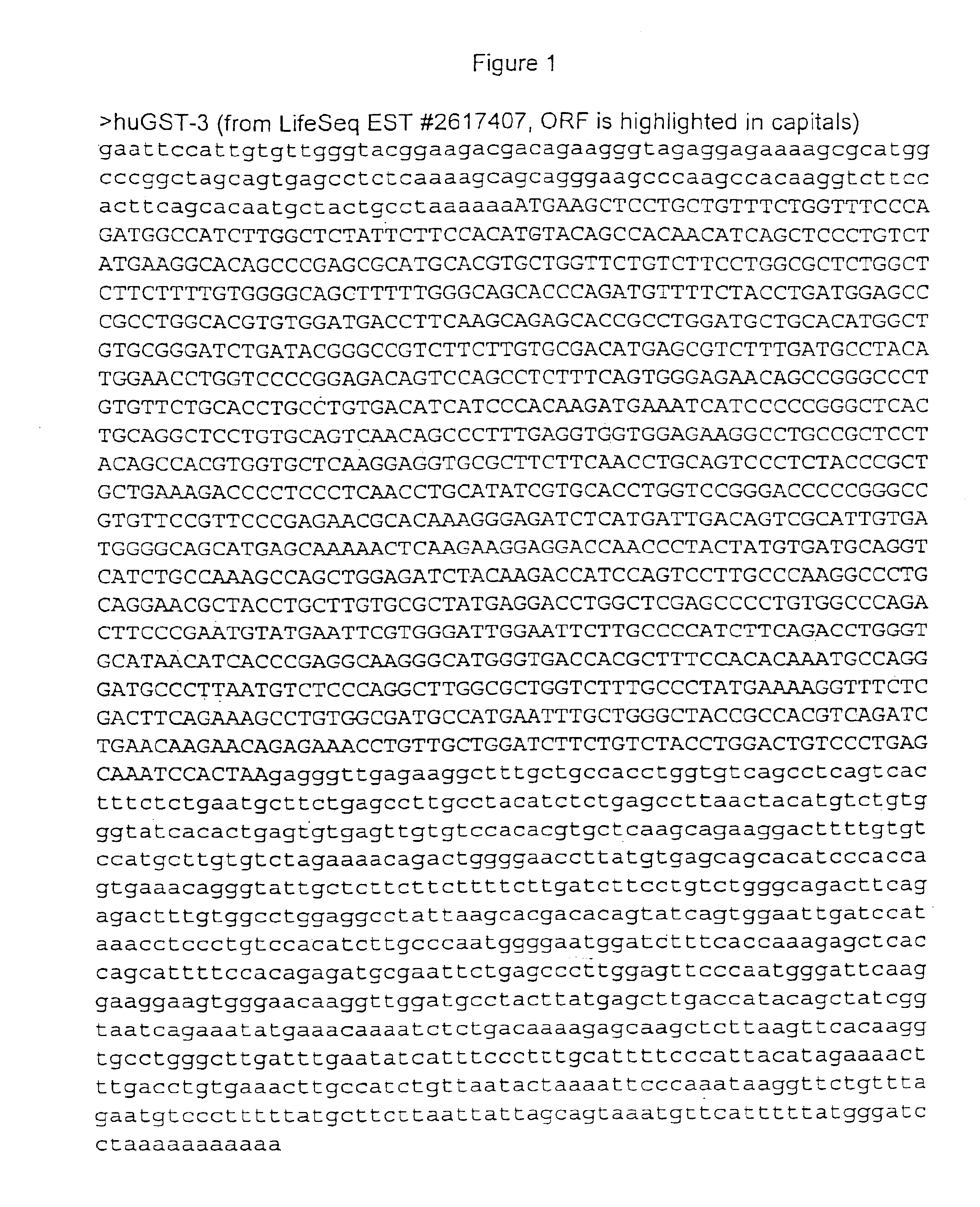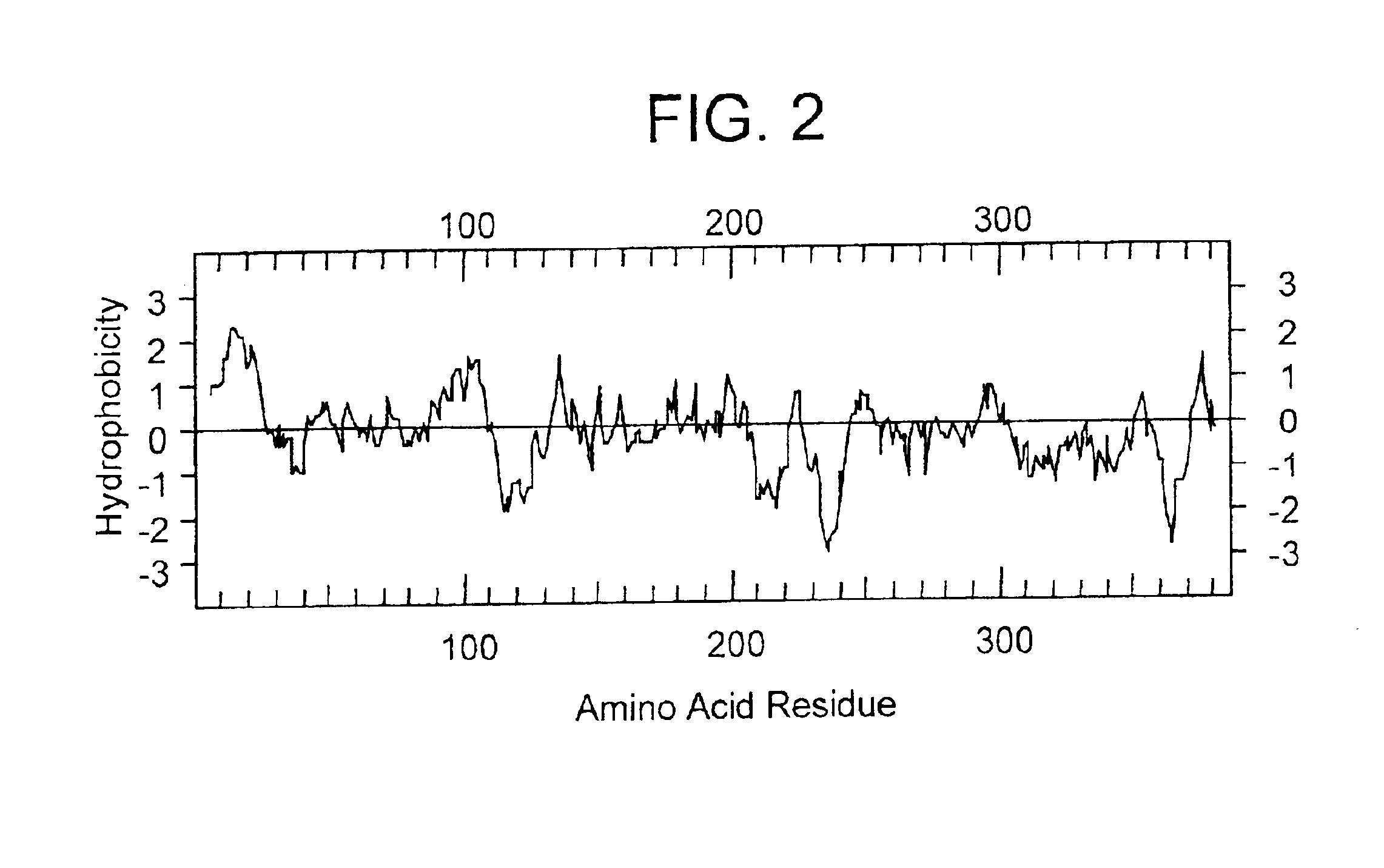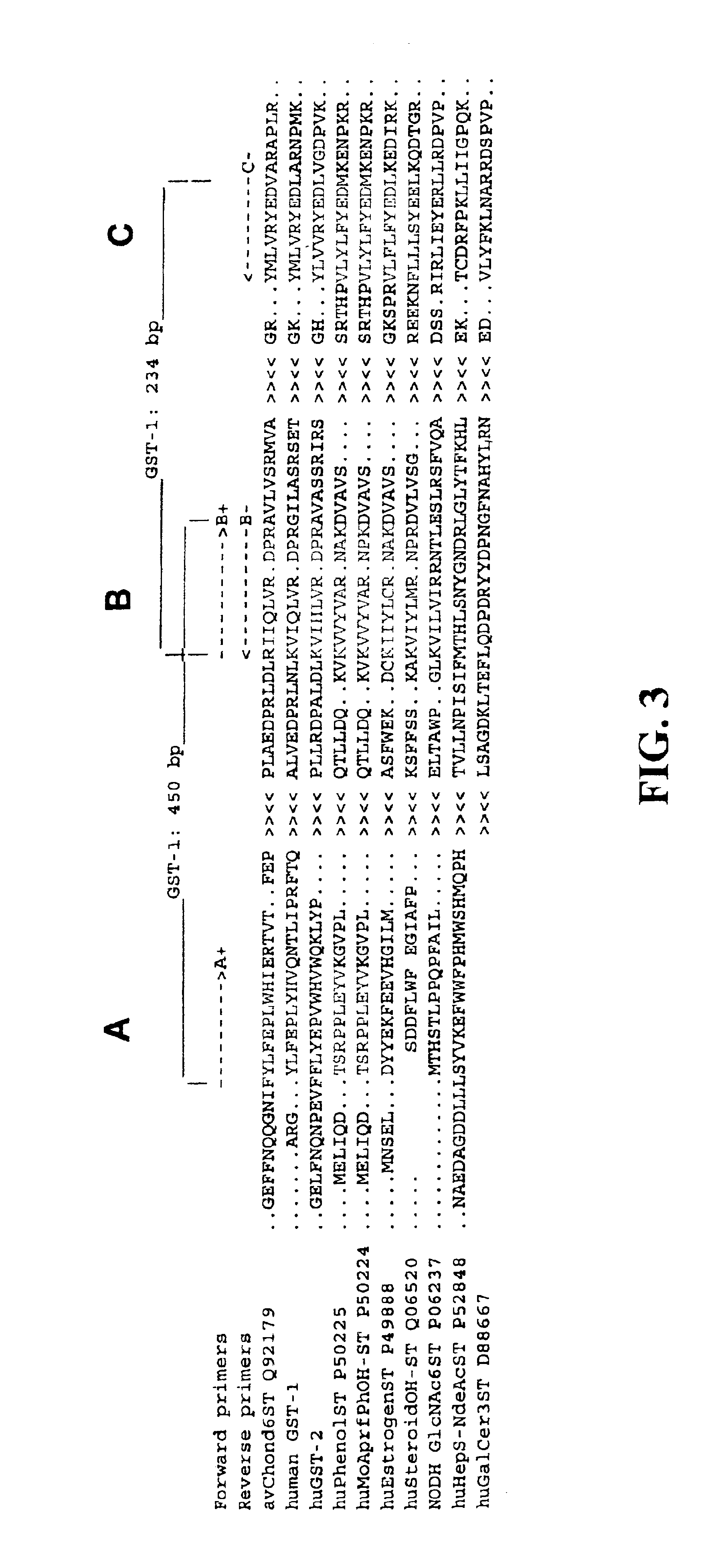Methods of inhibition using glycosyl sulfotransferase-3
a glycosyl sulfonate and inhibitory technology, applied in the field of cell adhesion, can solve the problem of reducing the period of time that the therapy is effectiv
- Summary
- Abstract
- Description
- Claims
- Application Information
AI Technical Summary
Benefits of technology
Problems solved by technology
Method used
Image
Examples
Embodiment Construction
I. Identification of GST-1 & GST-2
Human ESTs that are related to the C6ST / KSST at the protein level were searched by using TBLASTN which compares a protein query sequence against a nucleotide sequence database translated in all 6 reading frames. See Karlin, Samuel and Stephen F. Altschul (1990), Methods for assessing the statistical significance of molecular sequence features by using general scoring schemes, Proc. Natl. Acad. Sci. USA 87:2264-68; and Karlin, Samuel and Stephen F. Altschul (1993), Applications and statistics for multiple high-scoring segments in molecular sequences, Proc. Natl. Acad. Sci. USA 90:5873-7. As shown in Table 1, several ESTs, ranging from 228 to 861 bases, resulted in high scores. When compared over their entire length with the C6ST / KSST, the predicted amino acid identities ranged from 27% to 57%.
The cDNA clones corresponding to each EST were obtained from the ATCC and Research Genetics, Inc.,(Huntsville, Ala.) and sequenced in fillu to obtain further 3'...
PUM
| Property | Measurement | Unit |
|---|---|---|
| molecular weight | aaaaa | aaaaa |
| molecular weight | aaaaa | aaaaa |
| molecular weight | aaaaa | aaaaa |
Abstract
Description
Claims
Application Information
 Login to View More
Login to View More - R&D
- Intellectual Property
- Life Sciences
- Materials
- Tech Scout
- Unparalleled Data Quality
- Higher Quality Content
- 60% Fewer Hallucinations
Browse by: Latest US Patents, China's latest patents, Technical Efficacy Thesaurus, Application Domain, Technology Topic, Popular Technical Reports.
© 2025 PatSnap. All rights reserved.Legal|Privacy policy|Modern Slavery Act Transparency Statement|Sitemap|About US| Contact US: help@patsnap.com



